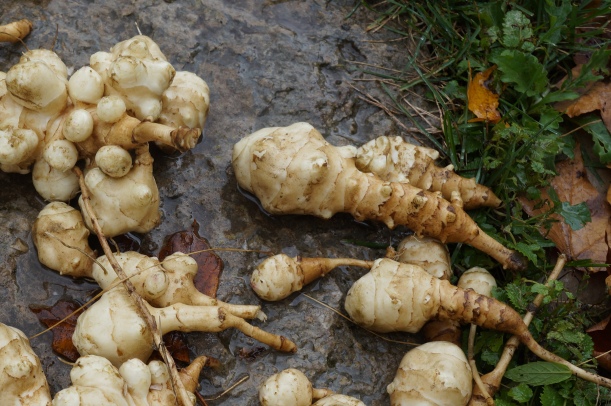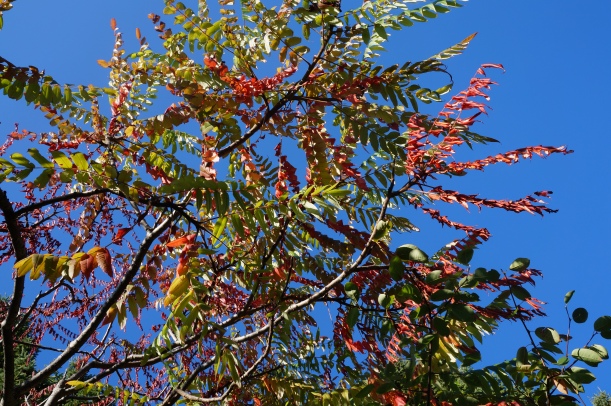There is frost predicted in this region within the next day, so I am in some hurry to rescue as much from the garden as I can. And as I do that, I thank all of you who have posted timely recipes on squash, kale, and the like – many of which we have enjoyed! It being Friday, I know that Angie’s guests will be bringing more treats from the garden – and elsewhere – to her 40th Fiesta Friday.
Among the plants I have harvested is my copious rose geranium and some feral apples, so Turkish delight seemed an obvious choice. I know this is not usually made with apples, but any fruit will do, and many recipes just call for flavouring, sugar and cornstarch, so this had to be better. The apples, being from an abandoned orchard, are not treated with chemicals, and although a little irregular looking, are perfect for cooking, even with the skin on. Once again, I decided to use honey to avoid excess of sugar, but I will admit that it overpowers the rose flavour somewhat. Another time, I would either use half honey and half sugar, or add more geranium leaves to the mixture.
You could easily make this recipe with any fruit and flavouring, as well as chopped nuts. It is the cornstarch which gels it, so the pectin in the apples helps but is not essential. You could also use flavours like lemon, rosewater, pomegranate etc. instead of the geranium leaves.
How to Make Rose Scented Apple Honey Turkish Delight
Step 1. Cut the apples into large pieces and cover with water in a pan. I had enough to fill a large pot. Add a handful of rose scented geranium leaves and simmer until the fruit is very soft. Strain and measure the liquid. I had 4 cups.
Step 2. Add by volume one half the amount of honey, or 2 cups for this amount.
Step 2. Boil this syrup down until it reaches the hard ball stage or 260 degrees F (125 C)
Step 3. While this is boiling, measure 1/2 cup of cornstarch, 1/2 tsp cream of tartar and blend it with 1 cup of water. Mix well.
Step 4. When the syrup is boiled down and the right temperature, add the cornstarch mixture and stir over medium heat for about 10-15 minutes. It will get very thick and dark.
Step 5. Pour into a pan lined with slightly oiled parchment paper. Cover with plastic wrap while it cools to prevent a crust forming. Allow to cool for 3-4 hours.
Step 6. Cut into squares and coat each square with a ratio of 1 cup icing (confectioner’s) sugar to 2 Tbsp cornstarch.
This makes approximately 25 pieces.
I will definitely be making some version of this recipe again, depending on the season and ingredients available.














































